Last updated on April 14th, 2024
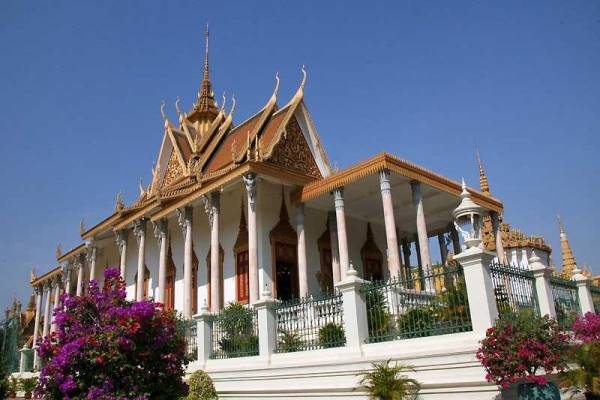
Royal Palace, © Can Stock / imagex
Visit Phnom Penh – Royal Palace
The Royal Palace is the major tourist attraction when you visit Phnom Penh. The Royal Palace is a complex of buildings built for the King of Cambodia including the Throne Hall, the Moonlight Pavilion, Khemarin Palace and the Silver Pagoda. The Silver Pagoda houses the Emerald Buddha. It is open to the public and is one of the few examples of the Khmer that was not destroyed by the Khmer Rouge.
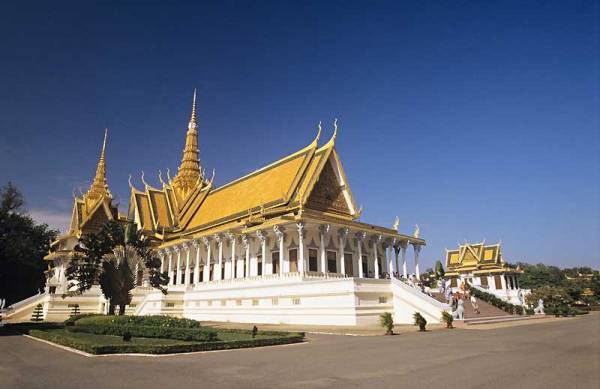
Royal Palace Complex, © Can Stock / micropix
At the northwest corner of the complex is the National Museum of Cambodia and the Veal Preah Man funerary complex. The Royal Palace Park and the Chaktomuk Conference Hall are along the riverfront beside the Royal Palace complex.
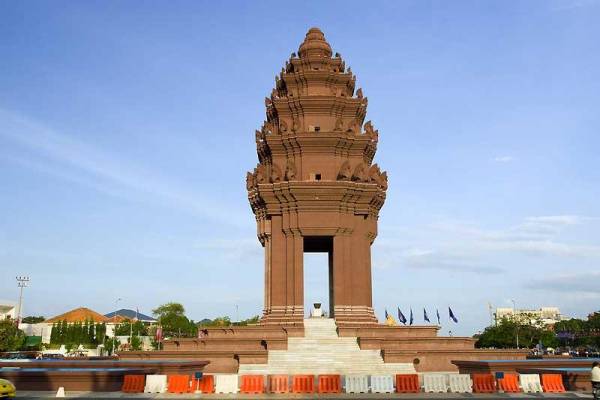
Independence Monument, © Can Stock / rognar
Immediately south of the Royal Palace complex is Wat Botum Park. In Wat Botum Park see the Cambodia-Vietnam Friendship Monument. Continue through Wat Botum Park to the Independence Monument. Visit Pencil Market on the way.
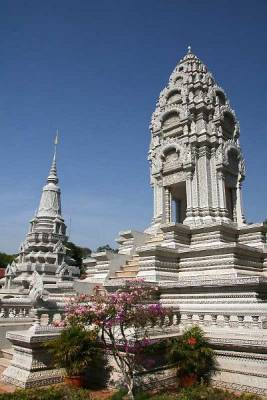
Silver Pagoda, © Can Stock / imagex
When you visit the Royal Palace, don’t forget to walk a couple blocks north to see the Wat Ounalom Buddhist monastery. Also at Wat Ounalom, see the statue of Daun Penh (Lady Penh), the founder of the city.
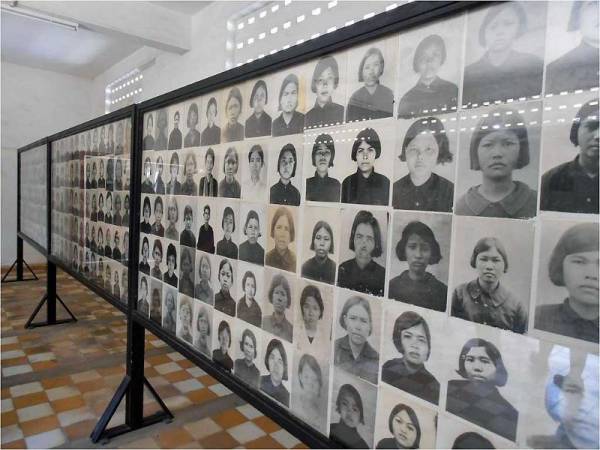
Victim Photos, Tuol Sleng Museum
Visit Phnom Penh – Other Sights
Other sights near the Royal Palace in Phnom Penh include:
- Wat Phnom Temple
- the National Assembly
- Tuol Sleng Museum has real pictures of actual prisoners on display in this school that was converted to a prison camp. Prisoners were then sent to the killing fields.
- Russian Market
- the Central Market and the nearby Sorya Shopping Center.
- Take a Full-Day Small-Group City Tour and ride a cyclo.
- Take a boat trip on the Tonle Sap River or the Mekong River. Try a Mekong River Half-Day Small-Group Tour.
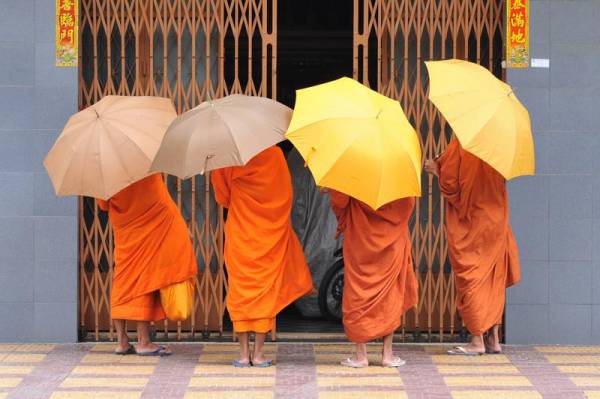
Real Monks? © Can Stock / mack_ch
Visit Phnom Penh – Performances and Festivals
- Watch an Apsara dance performance.
- Bonn Om Touk is the Boat Racing Water Festival. This 3 day celebration in November is determined each year by the end of the flood season, when the Tonle Sap River reverses direction and flows into the Mekong River once again.
- Come to Phnom Penh in mid April for Chaul Chnam Thmey, which is the Cambodian New Year.
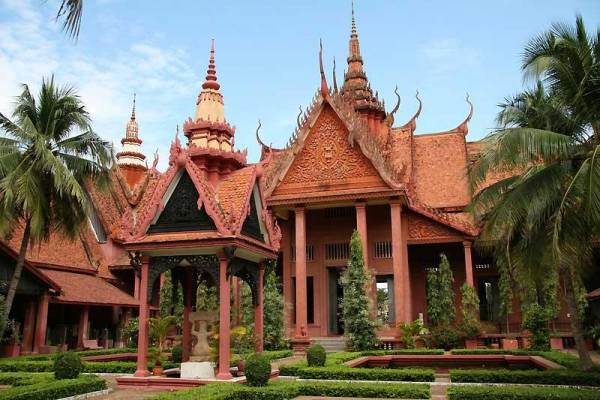
National Museum, © Can Stock / jorisvo
Visit Phnom Penh – Choeung Ek Killing Fields
The Choeung Ek Killing Fields near Phnom Penh are found at the Choeung Ek Memorial. A white stupa (temple) marks the place where more than 15,000 men, women and children were executed and buried. About 9,000 skulls recovered from the Choeung Ek Killing Fields have been encased in the shrine. This is only one of several hundred killing fields in Cambodia. The Choeung Ek Killing Fields are about 20 minutes south of the Royal Palace.
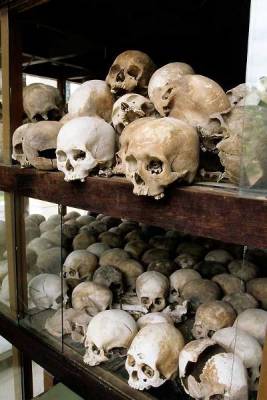
Choeung Ek Killing Fields, © Can Stock / rfoxphoto
Other Sights near Phnom Penh
Phnom Tamao Wildlife Rescue Center is about 25 miles from Phnom Penh. Go behind the scenes and see a Sun Bear.
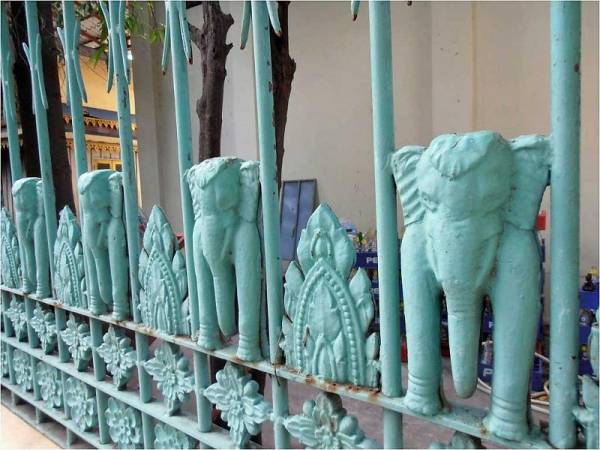
Gate, Visit Phnom Penh
Visit Phnom Penh – Hotels
- Sokha Phnom Penh Hotel
- Palace Gate Hotel & Resort
- Garden City Hotel
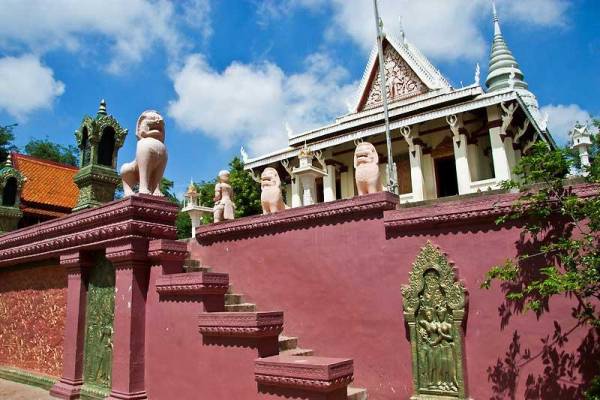
Wat Phnom Pagoda, © Can Stock / kennethFotos
Get to Phnom Penh
Most tourist get to Phnom Penh by air. The Phnom Penh International Airport (PNH) is about a half hour by cab from the Royal Palace and the main attractions downtown. Phnom Penh doesn’t have a mass transit system. Ferries and buses transport tourists the 200 miles (330 km) up the Tonle Sap River to Angkor Wat. Mekong River Cruises make a standard stop at Phnom Penh. These cruises also typically visit Ho Chi Minh City (Siagon) and often bus their passengers to Angkor Wat.
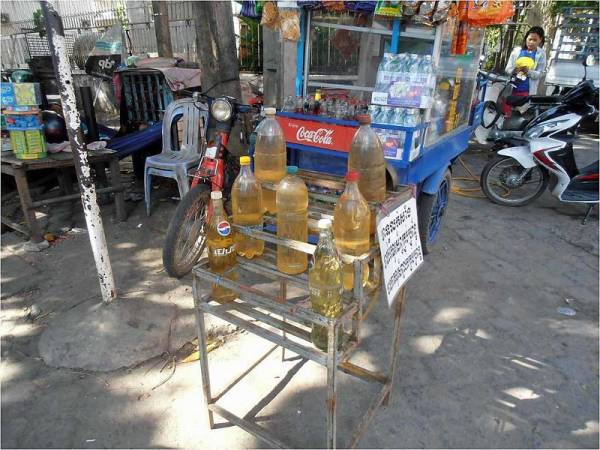
Gasoline For Sale in Bottles
Phnom Penh Weather
Phnom Penh weather is hot all year long. The main influence on Phnom Penh weather is the monsoon season from May to October. Rainfall peaks in October, when over 12 inches (300 mm) can be expected for the month. Average highs are about 90 F (32 C). Average lows are about 77 F (25 C). March to June can be a couple of degrees hotter than this, while November to January can be a couple of degrees cooler.
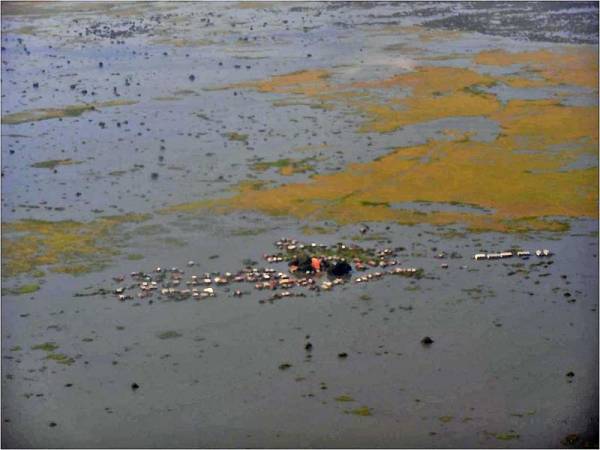
Mekong Delta Flooding
The best months to visit for weather are January and February. A popular month to visit Phnom Penh is in November, when Cambodians celebrate the end of the rainy season with Bon Om Touk (Boat Racing Water Festival).
Visit Phnom Penh – Background
More than 2 million people live in Phnom Penh. It’s the capital of Cambodia. Phnom Penh is on the Mekong River at a point where the Tonle Sap and Bassac Rivers join it. The French controlled the city in the late 1800s and influenced its architecture. Only a small reminder of French colonial flavor remains today.
The war atrocities and genocide by the Khmer Rouge during the late 1970s has unfortunately become the major thing that Phnom Penh is known for.
Khmer Rouge
The Khmer Rouge ruled Cambodia from 1975 – 1979 as part of the Communist Party of Kampuchea. Their most notorious leader was Pol Pot. The Khmer Rouge attempted to create a completely self sufficient agricultural society. In order to stop any capitalist activities, the Khmer Rouge used torture and genocide at more than 400 different killing fields. The Khmer Rouge separated children from their parents and taught the children to torture by practicing on animals. The Khmer Rouge targeted professionals, intellectuals, Vietnamese, Chinese and Buddhists. They tattooed, photographed and then killed these prisoners. Khmer Rouge even executed guards regularly in order to maintain secrecy. Around 2 – 3 million Cambodians died during the Khmer Rouge reign due to execution, widespread famine and disease.
Today the atrocities of the Khmer Rouge have passed into history, but are remembered at killing fields, temples and prison camps. You can’t really visit Phnom Penh without seeing the influence of the Khmer Rouge.

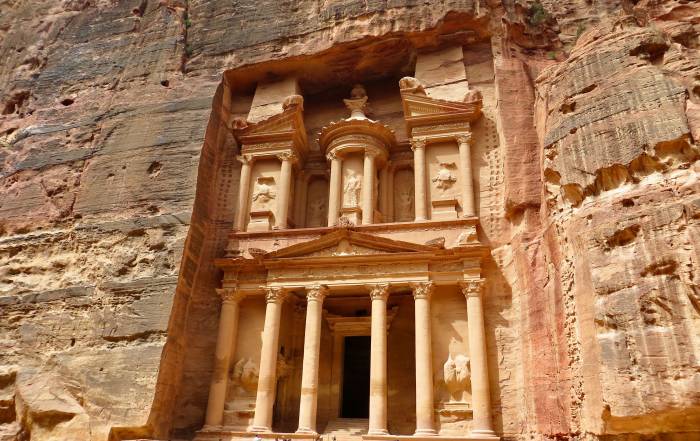
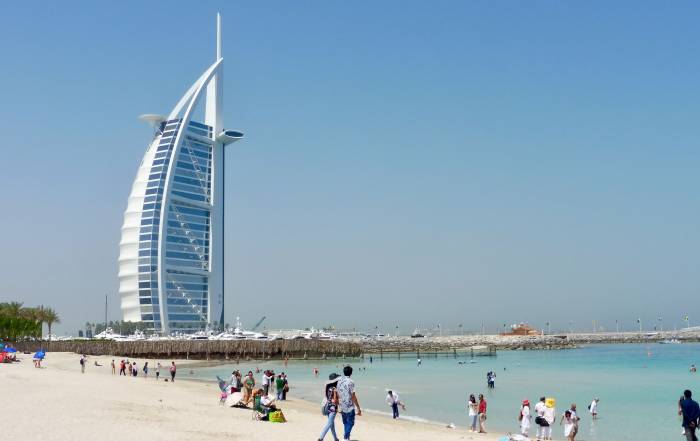
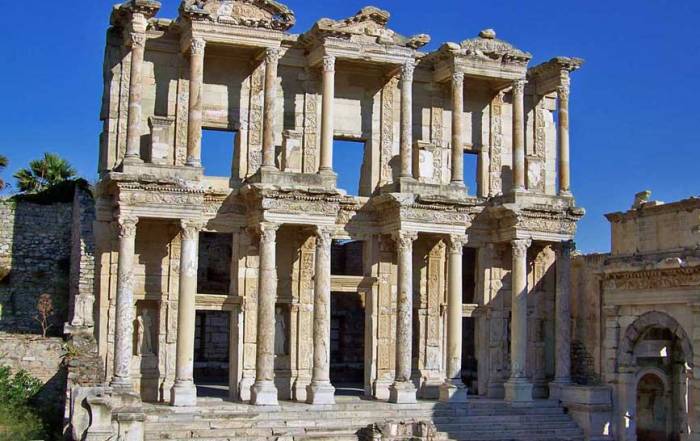
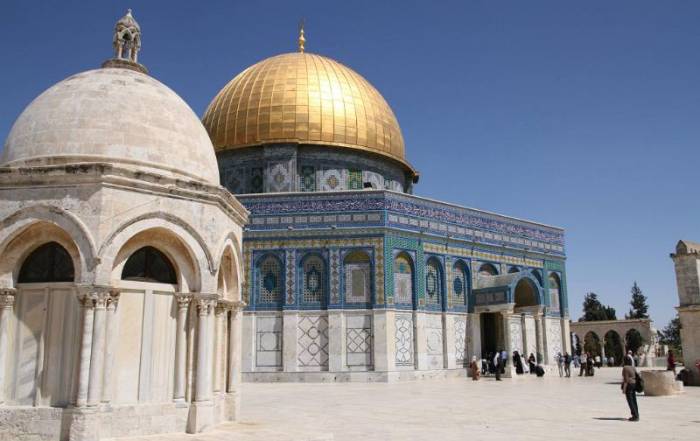
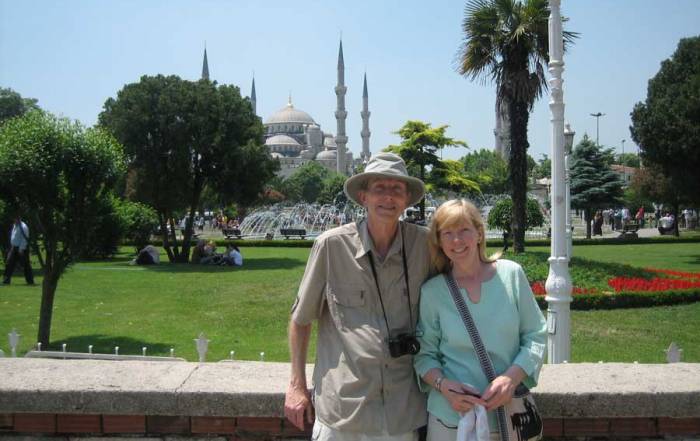
Leave A Comment